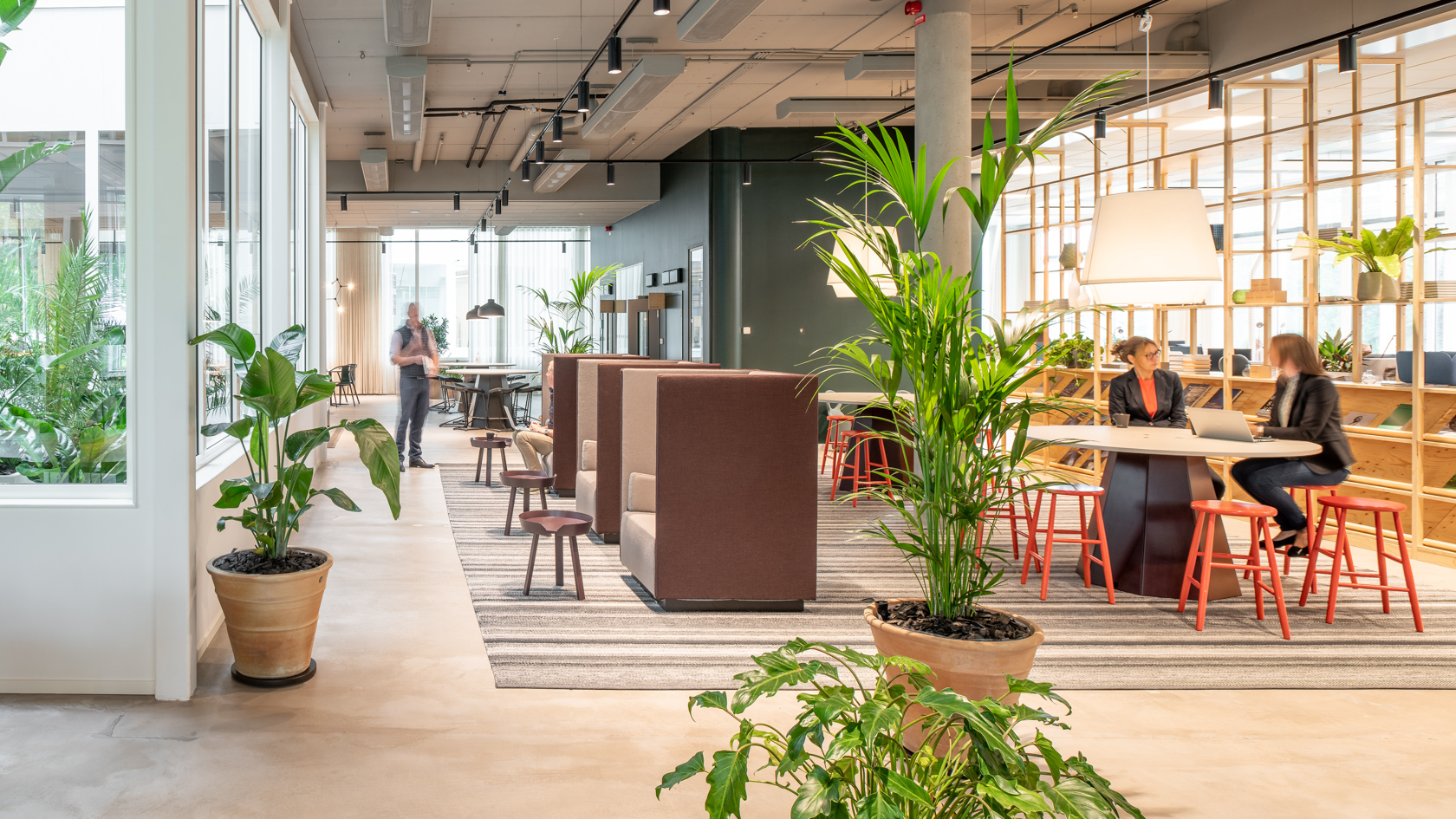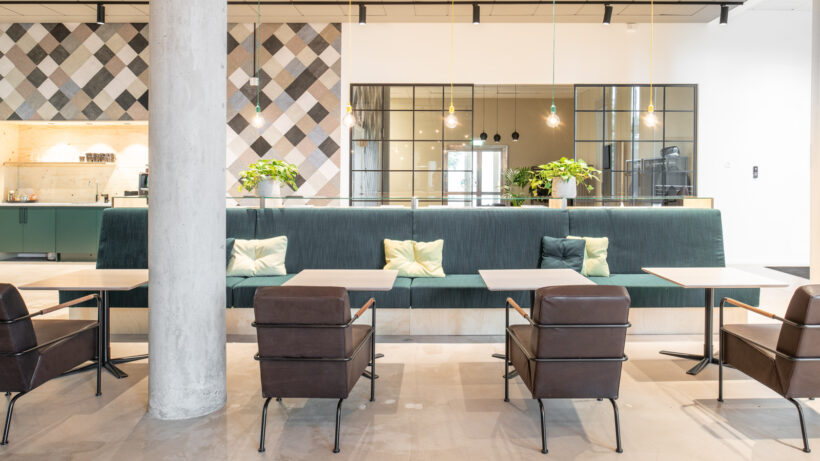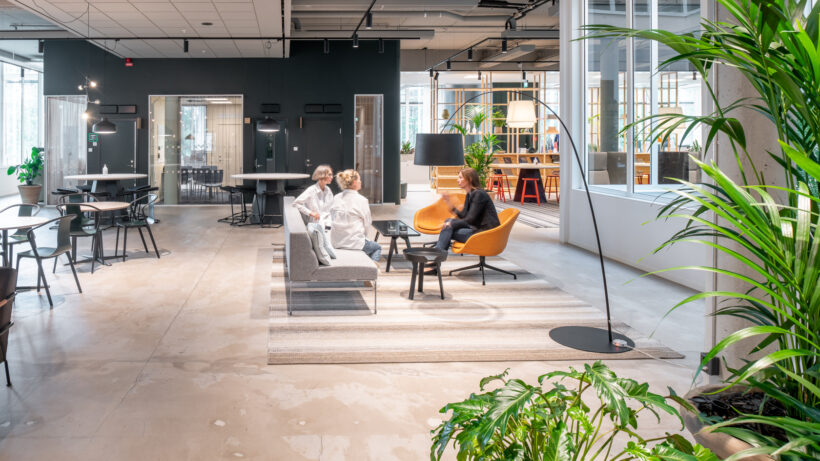Circularity in polite company
Annie Leonsson is an expert in circular interior design, and has been on White Arkitekter’s team in Kista alongside Laura Conradi. She says that seeing reuse as a second-hand choice in interior design is a thing of the past. Clients appreciate the environmental benefits, while circular interior design also is a message that strengthens the client’s brand. As more and more companies and projects demonstrate that reuse, recycling and upcycling are perfectly possible, while retaining high aesthetic values, the area is now deservedly accepted in polite company – and neither the concept nor the end results are compromised in any way.
In Klövern’s case, circularity has consciously been made a part of the concept, and reuse a part of the interior. Some of the furniture is being re-upholstered or repainted, but the aim is to take as few and as minor measures as possible to maximise the environmental benefit. Special carpentry and kitchenette parts are made in association with local joineries, and the carbon footprint is minimised by carefully selecting the place of manufacture, means of transport and reused material.
“I’ve worked with reuse in interior design at White Arkitekter for eleven years. When I started out, reuse was something that should ideally not be noticeable. Nowadays, companies like Klövern are choosing to allow reuse to be a visible part of the concept. By enhancing and using existing stock, property owners can show their clients they’re at the forefront and have a high level of ambition when it comes to sustainability,” says Annie Leonsson.


